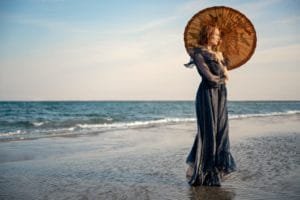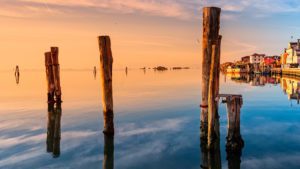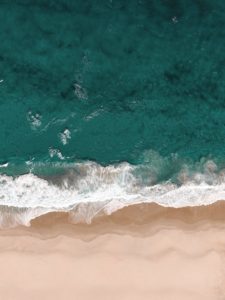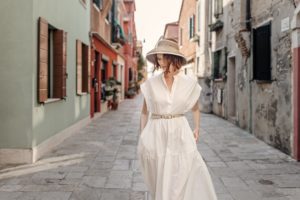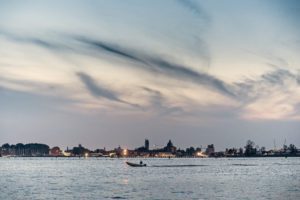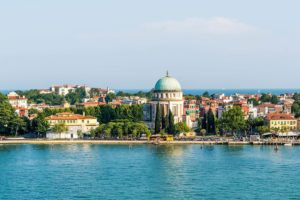A peaceful island, home to fishermen and lacemakers, with beaches far from tourism and colourful houses overlooking the water.

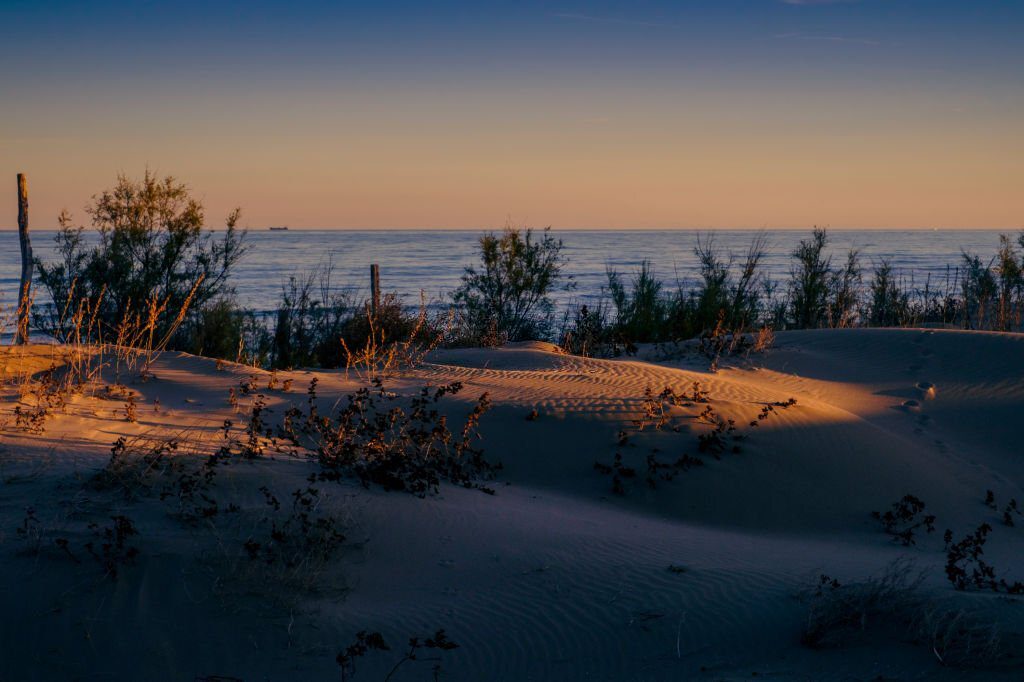
There are only three settlements on the island: San Pietro in Volta, Portosecco and Pellestrina, in addition to the towns of Santa Maria del Mare, to the north, and Ca’ Roman, to the south. In total, the inhabitants of the island do not exceed 4 thousand people.
Its particular conformation, with a width ranging from 25 metres to a kilometre, makes it a unique destination for both jogging and cycling.
Just like the Lido, Pellestrina is also protected by the Murazzi, Istrian stone breakwaters built by the Serenissima to protect it from the unrelenting sea. In some areas, the island is so thin that the sea and lagoon are divided only by a section of the fortifications. Pellestrina, like other illustrious and more famous Venetian islands, is also famous for its lace, which is created here with bobins, special spools that weave the threads over a cylindrical cushion (the tombolo).

FROM SANTA MARIA DEL MARE TO MUSEO OF THE SOUTH LAGOON
If you want to go all the way, on foot or by bicycle, starting from the north you will first meet Santa Maria del Mare, a green region full of trees and “valli da pesca,” those areas typical of the Venice lagoon protected by fences or embankments where ancient fishing is practiced in “vallicultura”.
From there, you arrive at the port of San Pietro in Volta, the oldest village of Pellestrina, where you will find the Church of the same name, built in the eighteenth century, and some remains of German fortifications of the First World War. The town tenaciously preserves its marine origins, and indeed all the colourful houses overlook the water. Here you can also find the Piccolo Museo [little museum] of the South Lagoon, founded in 2007 and where you can discover the history of the island, the Murazzi, fishing and the terrible flood of 1966.

CONTINUING SOUTH
Continuing south, we arrive at Portosecco, and finally, at Pellestrina, a village divided into four districts (Scarpa, Zennari, Vianelli and Busetti) that take their name from the four families who repopulated the area here after the War between Venice and Genoa at the end of the fourteenth century.
Finally, the southern end of the island is occupied by the large nature reserve of Ca’ Roman, a wild beach with a perfectly preserved system of sandy dunes flanked by a forest, which are no less impressive than those of Alberoni. Here, there is a green oasis protected by LIPU, where 190 species of birds have been observed. Indeed, the area’s isolation has allowed to a perfect habitat to be preserved for the birds to stop over during migration.
Another point of interest in the area of Ca’ Roman is an atomic bunker abandoned since the Second World War.
To round off your visit to Pellestrina, you can walk along the path inside the forest, continuing towards the pier and the lighthouse of Ca’ Roman, where you can gaze at Chioggia.
The “burned and wild” island.


